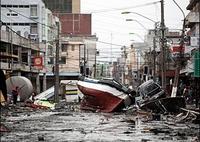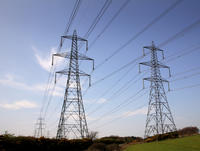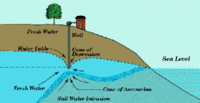-
New vest offers GPS tacking and other information
Canadian company Laipac Technology is showing its S911 GPS Vest which the company describes as “a high coverage assault protection designed for military, tactical law enforcement and VIP personnel that demand the highest protection.”
-
-
Tsunami-predicting software to help protect coastal communities

New software has been developed to help protect vulnerable coastal communities from the destruction of a tsunami; the mathematical model has created significant interest in the wake of the 2011 earthquake and tsunami in Japan six months ago
-
-
Laser device detects IEDs

Researchers have developed a laser that could detect roadside bombs — the deadliest enemy weapon U.S. and coalition soldiers encountered in Iraq and Afghanistan; the laser, which has comparable output to a simple presentation pointer, potentially has the sensitivity and selectivity to canvas large areas and detect improvised explosive devices
-
-
Environmentalists worry border environment protection
Environmentalists have taken aim at an amendment to the Senate appropriations bill for DHS that would allow border enforcement agencies ultimate authority within 100-miles of the U.S. border
-
-
Designing a new grid pylon

There are more than 88,000 pylons in the United Kingdom; they stand some 50-meters high, weigh around twenty tons, and carry up to 400,000 volts of electricity over thousands of kilometers of some of the most exposed, weather-beaten parts of Britain; the familiar steel lattice tower has barely changed since the 1920s; National Grid says it is time for a change
-
-
St. Andrews University promoting its certificate in terrorism studies

The University of St. Andrews is promoting a program leading to a certificate in it terrorism studies; the program was established in 2006 in is offered on-line
-
-
Man-made silk mimics spider silk

Spider silk has attracted human interest for thousands of years due to its toughness and ductility; as with most biomaterials, spider silk has evolved over millions of years resulting in a combination of properties that far exceeds any man-made material; until now
-
-
Earth's largest environmental catastrophe: 250 million year anniversary
The eruption of giant masses of magma in Siberia 250 million years ago led to the Permo-Triassic mass extinction when more than 90 percent of all species became extinct
-
-
Saltwater intrusion threatens South Florida’s water supplies

South Florida’s water supply is becoming increasingly endangered by saltwater that is steadily seeping in from the ocean and contaminating supplies; despite the best efforts of local communities to stop the problem, saltwater intrusion is spreading
-
-
Texas drought forces military to change training

A particularly severe drought in Texas has forced the military to change the way it trains its soldiers due to the risk of starting fires; law enforcement agencies would benefit from taking note of additional safety measures put into place
-
-
Severe drought in Georgia, 150 counties declared disaster areas
A severe drought and excessive heat has forced the U.S. Department of Agriculture to declare 150 counties in Georgia as primary natural disaster areas; the drought began on 15 April and has caused farmers to lose more than 30 percent of their pasture, grain crops, cotton, peanuts, tobacco, and forage crops
-
-
Industrial stent-like repairs for failing pipelines
There are thousands of miles of pipe underground in the United States, some more than 100 years old; gas, oil, water, and sewage seep, and sometimes gush, through corroded joints and defective welds every day; new technology uses carbon and glass laminates to repair and replace failing pipelines
-
-
Sea level rise to take economic toll on California coast
California beach towns could face hefty economic losses caused by sea level rise, according to a new state-commissioned study; the study estimates the cost of coastal storm damage and erosion, both of which are expected to increase as sea levels rise
-
-
Carbon abatement technologies compete for prizes
The U.K. Technology Strategy Board is investing up to £4.5 million in carbon abatement technologies (CATs), centered mainly on innovative projects with strong elements of technology demonstration; to select the technologies, the TSB is holding a competition
-
-
Emergency cleanup plans for potential Cuban oil spill
With Cuba set to begin offshore drilling, the former head of the Environmental Protection Agency (EPA) is pressing the United States to immediately begin developing emergency plans to assist Cuba in the event of a major oil spill
-
More headlines
The long view
New Technology is Keeping the Skies Safe
DHS S&T Baggage, Cargo, and People Screening (BCP) Program develops state-of-the-art screening solutions to help secure airspace, communities, and borders
Factories First: Winning the Drone War Before It Starts
Wars are won by factories before they are won on the battlefield,Martin C. Feldmann writes, noting that the United States lacks the manufacturing depth for the coming drone age. Rectifying this situation “will take far more than procurement tweaks,” Feldmann writes. “It demands a national-level, wartime-scale industrial mobilization.”
How Artificial General Intelligence Could Affect the Rise and Fall of Nations
By Barry Pavel et al.
Visions for potential AGI futures: A new report from RAND aims to stimulate thinking among policymakers about possible impacts of the development of artificial general intelligence (AGI) on geopolitics and the world order.
Smaller Nuclear Reactors Spark Renewed Interest in a Once-Shunned Energy Source
By David Montgomery
In the past two years, half the states have taken action to promote nuclear power, from creating nuclear task forces to integrating nuclear into long-term energy plans.
Keeping the Lights on with Nuclear Waste: Radiochemistry Transforms Nuclear Waste into Strategic Materials
By John Domol
How UNLV radiochemistry is pioneering the future of energy in the Southwest by salvaging strategic materials from nuclear dumps –and making it safe.
Model Predicts Long-Term Effects of Nuclear Waste on Underground Disposal Systems
By Zach Winn
The simulations matched results from an underground lab experiment in Switzerland, suggesting modeling could be used to validate the safety of nuclear disposal sites.
